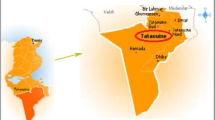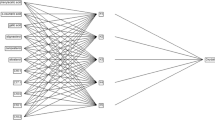Abstract
The relation between oxidative stability and composition in 58 virgin olive oils from different cultivars and Argentinian regions was studied over four harvest years. The oxidative stability of the oils was assessed using the OSI index (110 °C, 20 L/h air flow). A multiple linear regression model is proposed using OSI values as the dependent variable (multiple R = 0.933, p = 1 × 10−15), with positive contributions of the independent variables: fatty acid composition [oleic acid/(linoleic acid + linolenic acid), 55.3%, p = 1 × 10−15], total polyphenols (24.1%, p = 1.8 × 10−9), carotenes (4.8%, p = 6.1 × 10−5), β-tocopherol (1.9%, 6.0 × 10−3) and other compounds (13.9%). Highly significant correlation was observed between oxidative stability indexes estimated by the compositional model and those experimentally determined by Rancimat method (b = 0.981, R = 0.924). Chlorophylls and Δ-5-avenasterol contributions to the model were non-significant when variables related with fatty acids and polyphenols were included. The results suggest that the fatty acid composition and the polyphenol content are the main factors that affect the oxidative stability of olive oils. The proposed model allows the estimation of the oxidative stability in olive oils independently of the cultivar. The model was obtained also taking into account samples that lie out of the international legal limits in some compositional values due to natural variations.

Similar content being viewed by others
References
Kiritsakis AK (1998) Olive oil. From the tree to the table, 2nd edn. Food & Nutrition Press, Trumbull
Frankel EN (1985) Chemistry of free radical and singlet oxidation of lipids. Prog Lipid Res 23:197–221
Mateos R, Trujillo M, Perez-Camino MC, Moreda W, Cert A (2005) Relationships between oxidative stability, triacylglycerol composition, and antioxidant content in olive oil matrices. J Agric Food Chem 53:5766–5771
Shahidi F, Janitha PK, Wanasundara PD (1992) Phenolic antioxidants. Crit Rev Food Sci Nutr 32:67–103
Del Carlo M, Sacchetti G, Di Mattia C, Compagnone D, Mastrocola D, Liberatore L, Cichelli A (2004) Contribution of the phenolic fraction to the antioxidant activity and oxidative stability of olive oil. J Agric Food Chem 52:4072–4079
Criado MN, Morelló JR, Motilva MJ, Romero MP (2004) Effect of growing area on pigment and phenolic fractions of virgin olive oils of the Arbequina variety in Spain. J Am Oil Chem Soc 81:633–640
Torres de Pinedo A, Peñalver P, Morales JC (2007) Synthesis and evaluation of new phenolic-based antioxidants: structure-activity relationship. Food Chem 103:55–61
Morelló JR, Motilva MJ, Tovar MJ, Romero MP (2004) Changes in commercial virgin olive oil (cv Arbequina) during storage, with special emphasis on the phenolic fraction. Food Chem 85:357–364
Yang DP, Kong DX, Zhang HY (2007) Multiple pharmacological effects of olive oil phenols. Food Chem 104:1269–1271
Blekas G, Tsimidou M, Boskou D (1995) Contribution of α-tocopherol to olive oil stability. Food Chem 52:289–294
Mateos R, Domínguez MM, Espartero JL, Cert A (2003) Antioxidant effect of phenolic compounds, α-tocopherol, and other minor components in virgin olive oil. J Agric Food Chem 51:7170–7175
Madhavi DL, Deshpande SS, Salunkhe DK (1996) Food antioxidants. Marcel Dekker, New York
Ceci LN, Carelli AA (2007) Characterization of monovarietal Argentinian olive oils from new productive zones. J Am Oil Chem Soc 84:1125–1136
Bradley DG, Min DB (1992) Singlet oxygen oxidation of foods. Crit Rev Food Sci Nutr 31:211–236
Gordon MH, Magos P (1983) The effect of sterols on the oxidation of edible oils. Food Chem 10:141–147
Gordon MH, Mursi E (1994) A comparison of oil stability based on the Methrom Rancimat with storage at 20°C. J Am Oil Chem Soc 71:649–651
Ceballos C, Moyano MJ, Vicario IM, Alba J, Heredia FJ (2003) Chromatic evolution of virgin olive oils submitted to an accelerated oxidation test. J Am Oil Chem Soc 80:257–262
Gutfinger T (1981) Polyphenols in olive oils. J Am Oil Chem Soc 58:966–968
Mínguez-Mosquera MI, Rejano-Navarro L, Gandul-Rojas B, Sánchez-Gómez AH, Garrido-Fernández J (1991) Color–pigment correlation in virgin olive oil. J Am Oil Chem Soc 68:332–336
AOCS (1993) Official methods and recommended practices of the American Oil Chemists’ Society, 4th edn. The American Oil Chemists’ Society, Champaign
International Olive Council, IOC (2001). Preparation of the fatty acid methyl esters from olive oil and olive-pomace oil. COI/T.20/Doc. No. 24. http://www.internationaloliveoil.org
International Olive Council, IOC (2001). Determination of the composition and content of sterols by capillary-column gas chromatography. COI/T.20/DOC. No. 10/Rev. 1. http://www.internationaloliveoil.org
Draper NR, Smith H (1998) Applied regression analysis, 3rd edn. Wiley, Hoboken
Ceci LN, Melgarejo M, Carelli AA (2009) Calidad y Caracterización de Aceites de Oliva Vírgenes Producidos en la Costa Atlántica Argentina. Aceites & Grasas 70:50–55
Aparicio R, Roda L, Albi MA, Gutiérrez F (1999) Effect of various compounds on virgin olive oil stability measured by Rancimat. J Agric Food Chem 47:4150–4155
Salvador MD, Aranda F, Fregapane G (1999) Contribution of chemical components of Cornicabra virgin olive oils to oxidative stability. A study of three successive crop seasons. J Am Oil Chem Soc 76:427–432
Beltrán G, Aguilera MP, Del Rio C, Sanchez S, Martinez L (2005) Influence of fruit ripening process on the natural antioxidant content of Hojiblanca virgin olive oils. Food Chem 89:207–215
Baldioli M, Servili M, Perretti G, Montedoro GF (1996) Antioxidant activity of tocopherols and phenolic compounds of virgin olive oil. J Am Oil Chem Soc 73:1589–1593
Gordon MH, Paiva-Martins F, Almeida M (2001) Antioxidant activity of hydroxytyrosol acetate compared with other olive oil polyphenols. J Agric Food Chem 49:2480–2485
Ayton J, Mailer RJ, Haigh A, Tronson D, Conlan D (2007) Quality and oxidative stability of Australian olive oil according to harvest date and irrigation. J Food Lipids 14:138–156
Fakourelis N, Lee EC, Min DB (1987) Effects of chlorophyll and β-carotene on the oxidation stability of olive oil. J Food Sci 52:234–235
Baccouri O, Guerfel M, Baccouri B, Cerretani L, Bendini A, Lercker G, Zarrouk M, Ben Miled DD (2008) Chemical composition and oxidative stability of Tunisian monovarietal virgin olive oils with regard to fruit ripening. Food Chem 109:743–754
Hrncirik K, Fritsche S (2005) Relation between the endogenous antioxidant system and the quality of extra virgin olive oil under accelerated storage conditions. J Agric Food Chem 53:2103–2110
Gómez-Alonso S, Mancebo-Campos V, Salvador MD, Fregapane G (2007) Evolution of major and minor components and oxidation indices of virgin olive oil during 21 months storage at room temperature. Food Chem 100:36–42
Papadopoulus G, Tsimidou M, Boskow D (1993) Stability of virgin olive oil: assessment of natural antioxidants and other related factors. In: Charalambous G (ed) Food flavors. Ingredients and composition. Elsevier, Amsterdam, pp 321–326
Cercaci L, Passalacqua G, Poerio A, Rodriguez-Estrada MT, Lercker G (2007) Composition of total sterols (4-desmethyl-sterols) in extra virgin olive oils obtained with different extraction technologies and their influence on the oil oxidative stability. Food Chem 102:66–76
Acknowledgments
This work was supported by the ASAGA (Asociación Argentina de Grasas y Aceites), CONICET (Consejo Nacional de Investigaciones Científicas y Técnicas), and Universidad Nacional del Sur, Argentina. We gratefully thank Martha Melgarejo, who was an interlocutor with the productive sector staff, giving the instructions about sample collecting and providing trustworthy cultural and processing data.
Author information
Authors and Affiliations
Corresponding author
About this article
Cite this article
Ceci, L.N., Carelli, A.A. Relation Between Oxidative Stability and Composition in Argentinian Olive Oils. J Am Oil Chem Soc 87, 1189–1197 (2010). https://doi.org/10.1007/s11746-010-1598-6
Received:
Revised:
Accepted:
Published:
Issue Date:
DOI: https://doi.org/10.1007/s11746-010-1598-6




